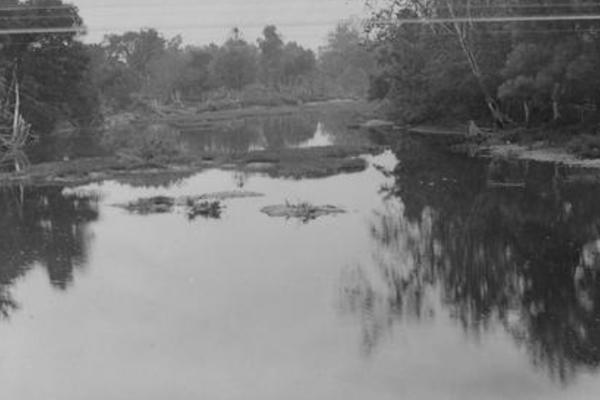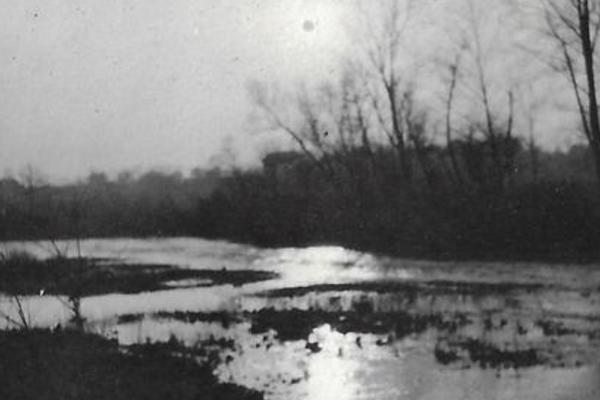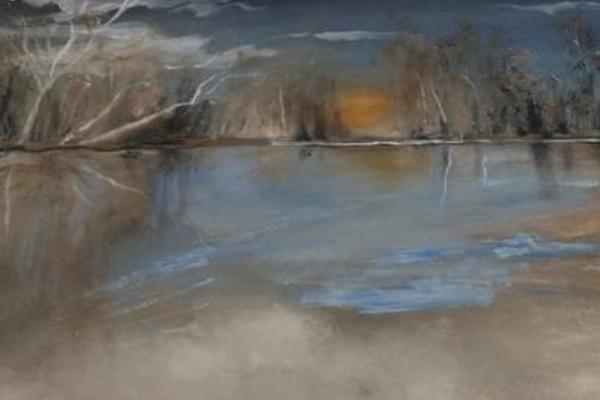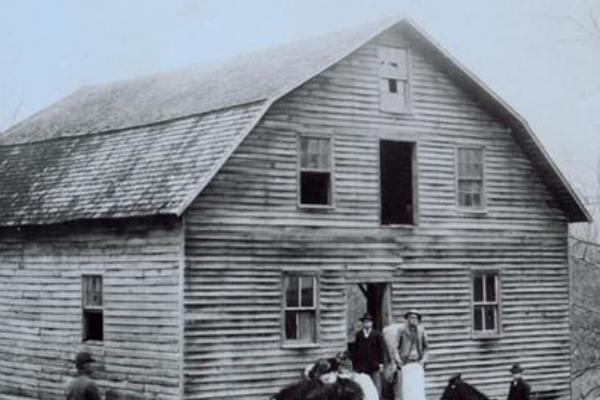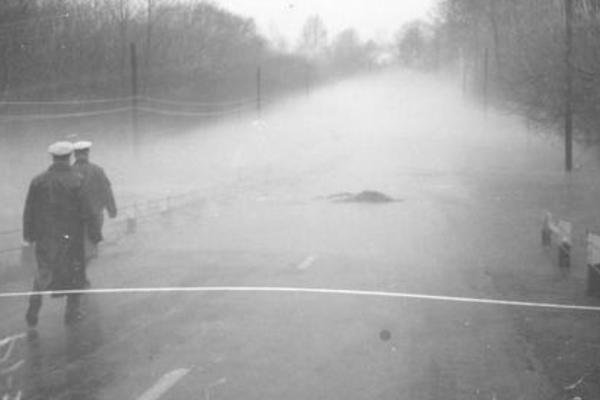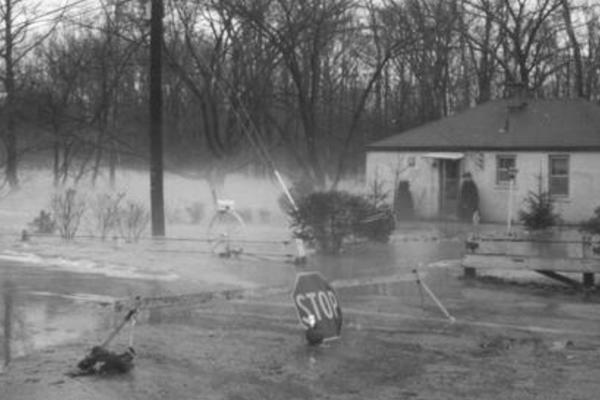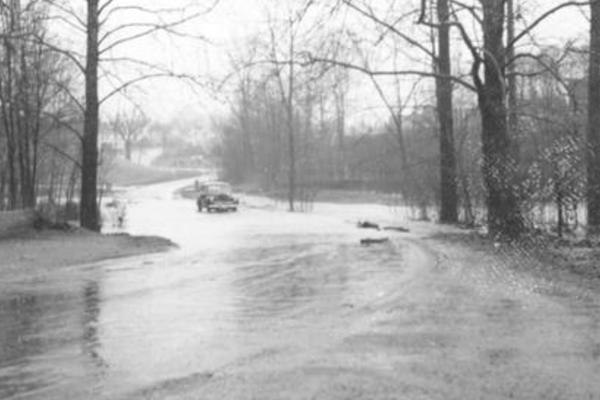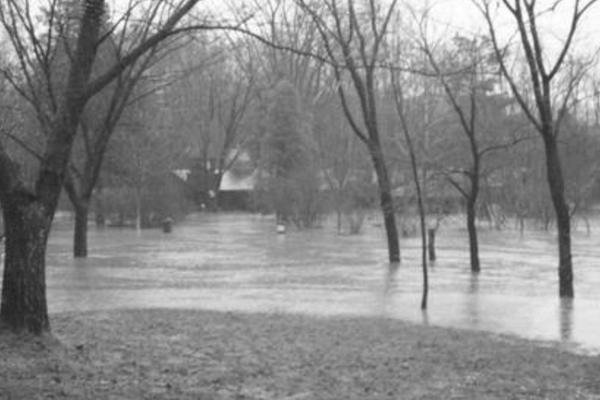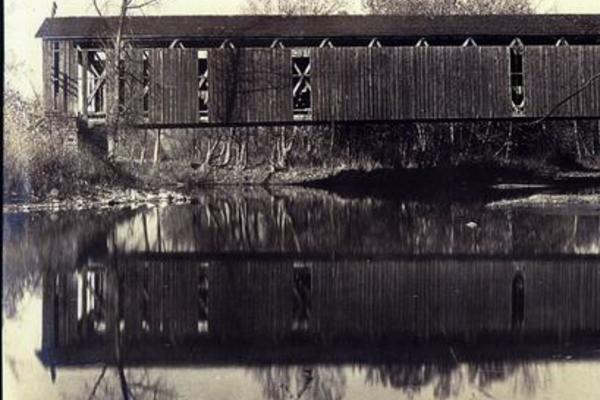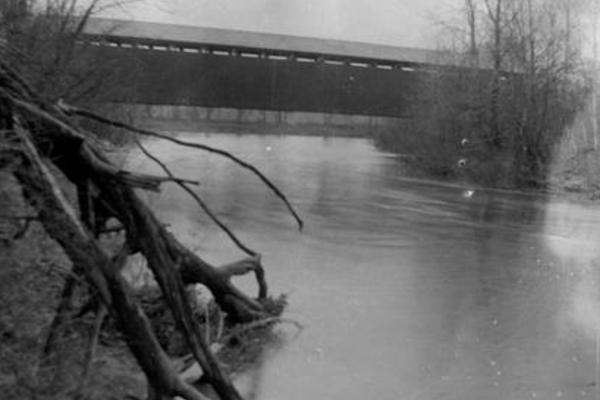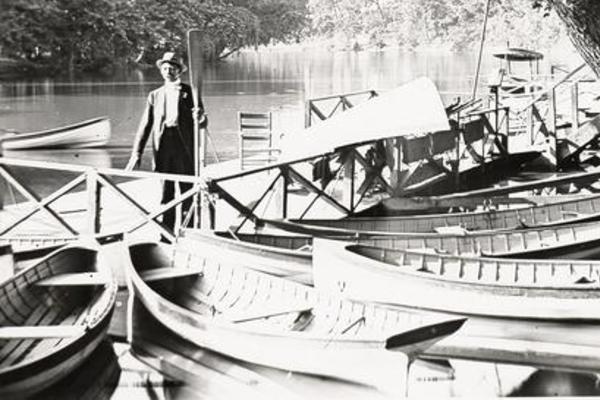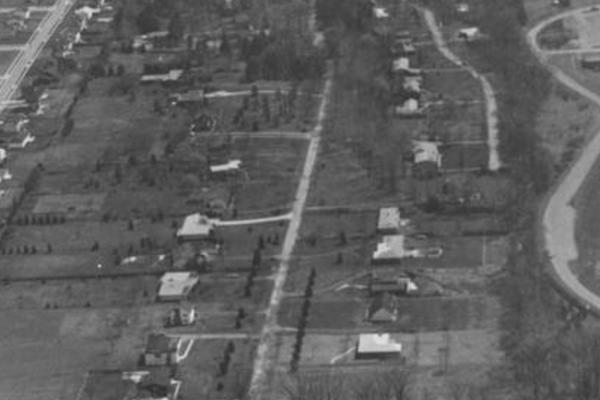Thursday,
February 1, 2024
9:30am
The Olentangy River is a familiar facet of Worthington's topography, winding its way through the western portion of the city's bounds. Designated a State Scenic River in 1973 by the Ohio Department of Natural Resources, the Olentangy flows south through Worthington and into its confluence with the Scioto River. This river, home to a range of flora, fauna and opportunities for adventure, is the focus of our February exhibit.
The river was once known as the Whetstone River, in reference to the shale that could be used to fashion tools. In 1833, Ohio's legislature, in part through the advocacy of Worthington's founder, James Kilbourne, changed the name of the river to Olentangy. The change was an ultimately misguided attempt to add indigenous names to state waterways. The renaming has been deemed a mistake, as "Olentangy," according to some sources, has indigenous linguistic ties that reference the red oxide clay found in Big Darby Creek, which previously held the name, Olentangy.
Though the area surrounding the Olentangy has faced increased pressure from development over the years, the river has maintained a wooded corridor of willow, red and silver maple, sycamore, oak, basswood and green ash, while its shale, forested banks provide the habitat for a variety of birds and other animals. The waters themselves are the home of freshwater mussels as well as dozens of fish species. In 1976, Boy Scout Troop 365 conducted a study on the Olentangy's water quality factors, finding the river to be decently healthy and expressing hope that the study would be repeated in future decades to determine if goals surrounding anti-pollution measures were effective long-term.
Recent conservation efforts have been taken up by the Friends of the Lower Olentangy Watershed (FLOW), which acts as steward of the portion of the river from the Delaware Reservoir to its confluence with the Scioto, as well as the land area that drains into the waters. In the early 2000s, the group lauded the river's improving water quality while also working to clean up the tributary streams not meeting water quality standards. The group continues to work toward protection and awareness efforts for the Olentangy River, hosting litter clean-up events and curbing the effects of invasive species.
Local freeways have also made their mark on the Olentangy. The construction of state Route 315, sometimes known locally as the Olentangy Freeway, had a major effect on the river. While the original plans for the highway would have cut through a large swath of undeveloped Olentangy river valley, opposition calling for parkland preservation of the valley led to a revision: 60 acres of riverbank parkland would be saved by diverting the river away from Medick Estates and northern subdivisions. In 1966, Worthington City Council passed the ordinance that gave permission to state officials to build state Route 315 through Worthington's city limits, while also requiring that the undeveloped areas to the east of the rechanneled river be preserved.
The Olentangy River has also provided a space for a plethora of activities. In the early 20th century, Olentangy Park, once the largest amusement park in the nation, would have been a grand attraction to locals who ventured a few miles south of town. Worthington Memory contains an image of Edwin Viets Griswold, of Worthington, tending canoes at the park's boathouse. Though the park closed during the Great Depression, its rides, performances and river excursions offered fun for locals and beyond for years.
The Olentangy River and its surrounding area is still a hub for activity, with riverbanks offering opportunities to fish, play and explore. The Olentangy Parkland, created in 1974, has connected Worthington residents to multipurpose trails and recreation areas since its inception. In an expansion dedicated in 1980, Phase II of the Parklands included tennis courts, soccer fields and a series of fitness stations along the trail. The multipurpose path on the Parklands is now part of the Olentangy Greenway Trail, which connects pedestrians and bikers to adventures from Worthington Hills to downtown Columbus.


